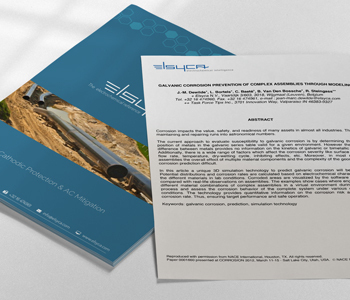
Galvanic corrosion of multi-metal assemblies (NACE 2012)
Corrosion impacts the value, safety, and readiness of many assets in almost all industries. The cost of maintaining and repairing runs into astronomical numbers.

Galvanic corrosion of multi-metal assemblies (NACE 2012)
J.-M. Dewilde, L. Bortels, C. Baeté, B. Van Den Bossche, Elsyca n.v.; R. Steingass,Task Force Tips Inc.
Abstract
Corrosion impacts the value, safety, and readiness of many assets in almost all industries. The cost of maintaining and repairing runs into astronomical numbers.
The current approach to evaluate susceptibility to galvanic corrosion is by determining the relative position of metals in the galvanic series table valid for a given environment. However the potential difference between metals provides no information on the kinetics of galvanic or bimetallic corrosion. Additionally, there is a wide range of factors which affect the corrosion severity like surface area ratio, flow rate, temperature, dry-wetting cycle, inhibiting effects, etc. Moreover, in most mechanical assemblies the overall effect of multiple material components and the complexity of the geometry make corrosion prediction difficult.
In this article a unique 3D simulation technology to predict galvanic corrosion will be presented. Potential distributions and corrosion rates are calculated based on electrochemical characterization of the different materials in lab conditions. Corroded areas are visualized by the software tool and are compared with real-life observations on assemblies. The examples show cases where engineers select different material combinations of complex assemblies in a virtual environment during the design process and assess the corrosion behavior of the complete system under various environmental conditions. The technology provides quantitative information on the corrosion risk as well as the corrosion rate. Thus, ensuring target performance and safe operation.
Download pdf